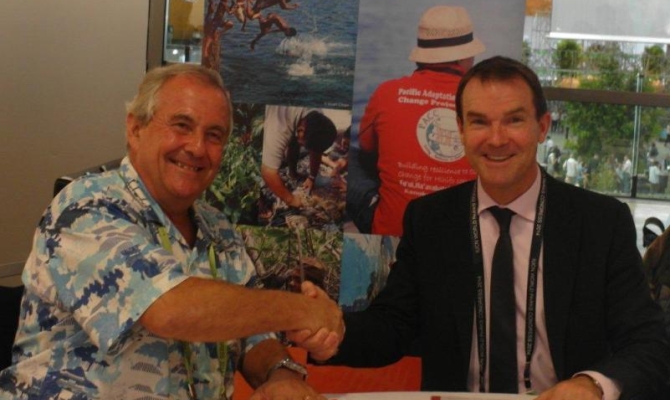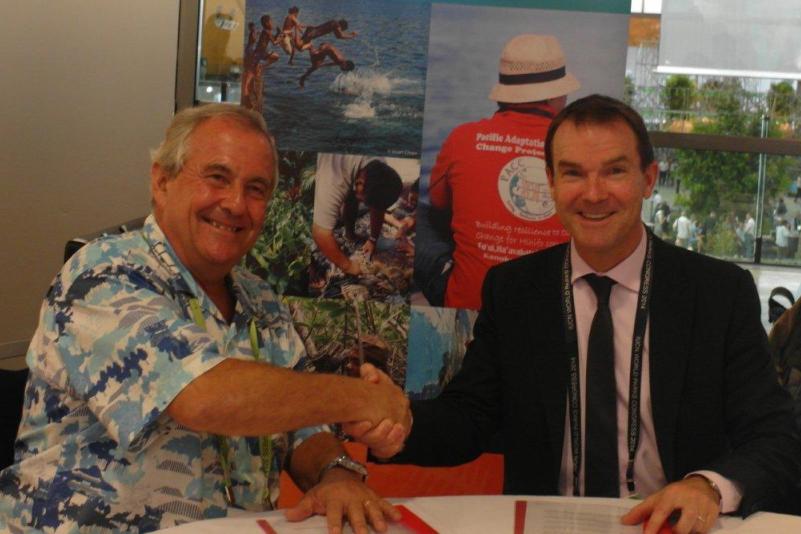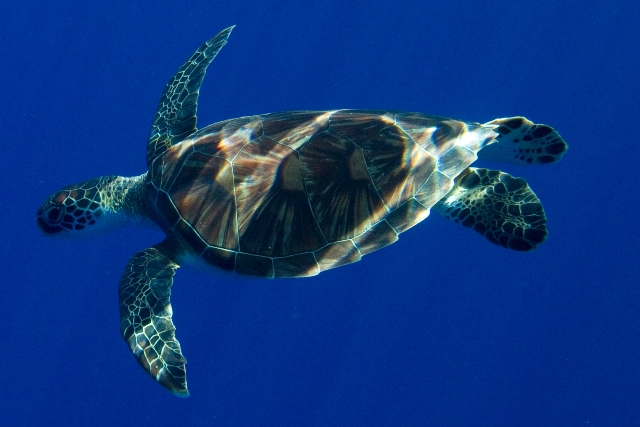
Island and Ocean Ecosystems
 Mr. David Sheppard, SPREP and Mr. John Scanlon, CITES
Mr. David Sheppard, SPREP and Mr. John Scanlon, CITESThe Secretariat of the Convention on International Trade in Endangered Species of Wild Fauna and Flora (CITES) and the Secretariat of the Pacific Regional Environment Programme (SPREP) have today signed a Memorandum of Understanding which will strengthen their common goal of the conservation and sustainable use of protected species of wild fauna and flora.
Signing the agreement in the margins of the World Parks Congress today, Mr David Sheppard, Director General of SPREP, reflected that currently only six Pacific island countries are Parties to CITES.
"This is of great concern for a region which is a biodiversity hotspot of global importance, but where wild species and their products are widely used and traded," he said.
These include sperm whale teeth, turtle shells, corals, shells, shark fins and birds, insects and reptiles.
 All marine turtles species are listed as threatened under CITES - Image courtesy of Niue Tourism Office
All marine turtles species are listed as threatened under CITES - Image courtesy of Niue Tourism OfficeMr John E. Scanlon, CITES Secretary General, said "SPREP is our strongest regional partner and we are confident that this agreement will ensure better coordination and cooperation, especially in supporting countries in the region build their capacity to meet their obligations under this convention."
One of the first tasks under the agreement will be to encourage other Pacific island countries to join CITES and to build synergies between CITES and other biodiversity-related MEAs in the region, in particular, the Convention on Biological Diversity (CBD), the Convention on Migratory Species (CMS) and the Ramsar Convention on Wetlands.
Mr Scanlon added that potential areas of collaboration were already evident as was seen in a recent joint preparatory meeting held prior to the Conference of Parties to the CBD, CMS and Ramsar. The joint preparatory meeting brought together those involved in implementing all four of the afore-mentioned conventions, setting the foundation for a more integrated approach to implementation and monitoring at national level.
CITES is a legally-binding treaty with 180 States Parties from six geographic regions (including Oceania), whose aim is to conserve biodiversity and contribute to its sustainable use by ensuring that no species of wild fauna or flora becomes or remains subject to unsustainable exploitation through international trade.